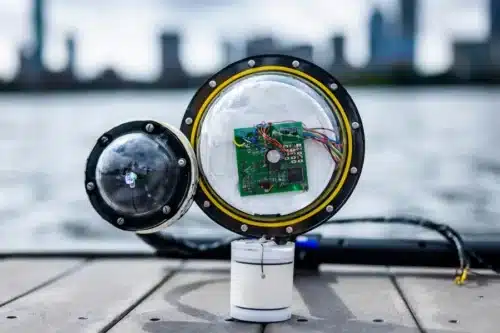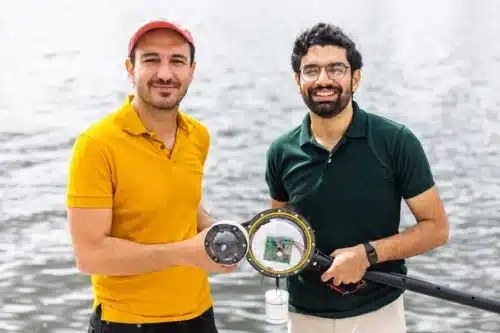MIT Engineers develop an underwater camera that could help scientists explore unknown regions of the ocean, track pollution, or monitor the effects of climate change.

Ocean has been a bigger mystery than Mars and Moon. What lies deep beneath the surface is an unsolved question, and this has been the case for centuries. With the development of technology there seems to be a window for its solution.
MIT engineers have taken a major step to overcome this problem by developing an ultra-efficient battery-free, wireless underwater camera. In fact, it is about 100,000 times more energy-efficient than other undersea cameras. Even in dark underwater environments, the device can take color photos and transmit image data wirelessly through the water.
What makes this autonomous camera especially unique is that it is powered by sound. It converts mechanical energy from sound waves traveling through water into electrical energy that powers its imaging and communications equipment. After capturing and encoding image data, the camera also uses sound waves to transmit data to a receiver that can reconstruct the image.
To build a camera that could operate autonomously for long periods, the scientists needed a device that could harvest energy underwater on its own while consuming very little power. Transducers made from piezoelectric materials are placed around the camera’s exterior and are used to acquire energy.
Piezoelectric materials produce an electric signal when a mechanical force is applied to them. When a sound wave traveling through the water hits the transducers, they vibrate and that mechanical energy is converted into electrical energy. Those sound waves could come from any source, like a passing ship or marine life. The camera stores harvested energy until it has built up enough to power the electronics that take photos and communicate data.

To keep power consumption as low as possible, the engineers used off-the-shelf, ultra-low-power imaging sensors. However, these sensors only capture grayscale images. And since most underwater environments lack a light source, they needed to develop a low-power flash, too.
The engineers plan to enhance the device so it is practical for deployment in real-world settings. They want to increase the camera’s memory so it could capture photos in real-time, stream images, or even shoot underwater video.
Reference: “Battery-free wireless imaging of underwater environments” by Sayed Saad Afzal, Waleed Akbar, Osvy Rodriguez, Mario Doumet, Unsoo Ha, Reza Ghaffarivardavagh and Fadel Adib, 26 September 2022, Nature Communications.
DOI: 10.1038/s41467-022-33223-x






